
Birding Localities Visited
Rio de Janeiro State
Teresopolis R.J.


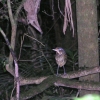

Upper and lower National parks, Jacaranda and Garrafoa.
Not so well visited as the Itatiaia Nat. park, this area of Atlantic rain-forest is home to a host of species some of which are rarely seen away from here, species such as Rufous-backed Antvireo, Hooded Berry-eater and Grey-winged Cotinga.There is also a dependable, year around, Black and Gold Cotinga leck in the upper part of the park and a host of walks and trails spanning the very bird-rich altitudes of 600 – 2000 meters.
Fitness Grading E-MD-D (depending upon altitude and trail)
Nova Friburgo R.J.

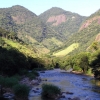
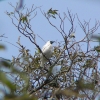
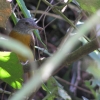
Estrada do Imperador trail, Macaé de Cima, Siberia and Lumiar
Similar to Teresopolis and only an hour or so’s drive east from there. Certain species appear easier here, this is the classic area to get great views of singing Bare-throated Bellbirds (seasonally dependent), many semi-open trails offer the chances to observe a host of typically canopy species with seemingly greater ease. In the 2005 season the rare Orange-breasted Falcon and Crowned Solitary Eagle were both to be found in this region.
Fitness Grading E-MD.
Praia Seca/ Marica R.J.
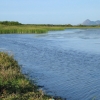
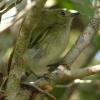
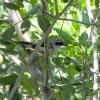
restinga and seasonally dry low-level forest
This sandbar scrub-forested area boarders the northern Rio de Janeiro state coastline and is home to the recently described Restinga Antwren. It is also great for waterside and sea-birds as well as harbouring some unusual extra-limital woodland species such as Red-legged Honey-creeper, Yellow-breasted Flycatcher, Lemon-chested Greenlet.The restinga holds a colony of the endemic Hangnest Tody-tyrant which is relatively difficult to see elsewhere.
Fitness Grading E
The Marica Lowland Forests R.J.

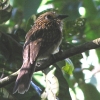
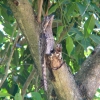
endemic Antbirds and Puffbird
Immediately behind the coastal lagoons and Sandbar restinga lie a range of 600metre plus, forested mountains, Richard’s local knowledge will enable us to bird a number of interesting trails at lower altitudes in this range, where species such as Crescent-chested Puffbird, Sooretama-slatey & Chestnut-backed Antshrikes, Scaled Antbird, Unicoloured, White-flanked and Rufous-winged Antwrens etc can all be regulary encounterd.
Fitness Grading E-MD
Silva Jardim. Hot Humid Lowland Jungle R.J.

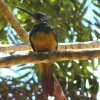
lowland endemics and Tamarins
A recently discovered sequence of Forested hills approx. 1 hrs. drive East from Marica offers some more interesting lowland species, Turquoise & Yellow-backed Tanagers, Helmeted Pygmy Tyrant and Rufous-tailed Jacamar are all regularly seen here and if we are lucky maybe a Minute Hermit or even an endangered White-necked Hawk will put-in an appearance? Re-introduced Golden-lion Tamarin Marmosets can often be encounteredat this same location.
Fitness GradingE-M.
Lagoa Feia and the Campos dos Goitacazes wetlands R.J.
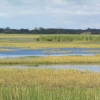

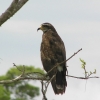
Located approx three hours drive North of Rio city (two hrs. from Marica). This is a huge river delta and swamp complex, rich in wetland and grassland birds, species such as Snail kite, Limpkin and Pinnated Bittern abound here alongside the more localized specialities that include Rusty-collared Seedeater, Collared Plover and the Southern race (melanurus) of Black-winged Stilt. Dependent on season this area can also prove very productive for waders, gulls, terns and Waterfowl.
Fitness Grading E
Sumidoro R.J./M.G.

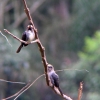

seasonally dry scrub-forest and surrounding marshes
Fast becoming a famous stake-out location for the very limited range endemic, Three-toed Jacamar, Sumidoro and the surrounding dry forest is proving a very interesting stop-off spot on the way north to Minas Gerais state and regularly turns up the unexpected such as Blue-winged Macaw, Black-necked Aracari, Rufous breasted Hermit or even a reclusive and rare Rio de Janeiro Antbird?
Fitness Grading E
Angra dos Reis region.R.J.


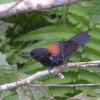
Ariro and Pereque
Great coastal birding along the humid coastline of southern Rio state and home to the recently rediscovered Hooded Antwren. Great scenery and excellent all-round low-level humid rainforest birding. Fast becoming a closer alternative to the Ubatuba region with many of the same species present.
Fitness Grading E
Ilha Grande. R.J.
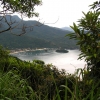

tropical island reserve, no roads/cars, fantastic jungle hikes and beaches
A fantastic fully forested island (ex-penal colony) just two hours ferry ride from the coastal port of Angra dos Reis. Bellbirds, Fruit-Crows and rare amazon parrots (A. rhodocorytha), set in a backdrop of jungle-surrounded beaches (ideal for snorkelling) and majestic mountains.
Fitness Grading MD-D
Itatiaia R.J.

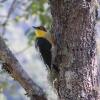

upper and lower parks
Another world famous stop-over, excellent hotel accommodation with daily-stocked fruit and hummingbird feeders, ensures a memorable stay at this, the first of Brazil’s national parks, even if you decide not to venture out onto the jungle trails. The Itatiaia Park is home to such regional specialities as White-bearded Antshrike, Saffron Toucanet and the minute and stunningly painted, Frilled Coquette.
Fitness Grading E-MD
Sao Paulo State
Ubatuba S.P.
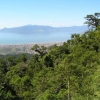
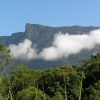
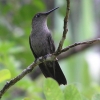
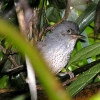
fazendas Capricornio & Angelim , Folha seca and Corcovado trails
Surely one of the classic South Eastern Brazilian birding stop-offs, a haven for some very range restricted humid forest endemics such as Buff-throated purple-tuft, Slatey Bristle-front, Fork-tailed Pygmy-tyrant, & etc.
Fitness Grading;Fazendas E, Other localities MD-D
Campos do Jordao. S.P.
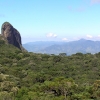
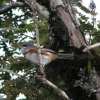

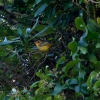
High altitude Serra do Mar species in a pleasant colonial town
Approx 2hrs drive from Itatiaia and an equal distance from the Sao Paulo International Airport. This locality boasts the majority of the Species to be found at the upper Itatiaia national park alongside other specialities such as, Red-ruffed Fruit-crow, Tataupau Tinamou and a famous Vinaceous-breasted Amazon Parrot roost. The road conditions here are much better than at the rather precarious Agulhas Negras Itatiaia upper-park track.
Fitness Grading E
Serra da Bocainia. S.P.
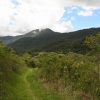
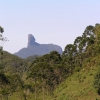

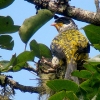
Intermediate level endemics at a rarely birdedlocation
Is a surprisingly rich subtropical woodland, rarely visited by even local ornithologists and a haven for atlantic rainforest birds, where Blue Bellied Parrot, White-breasted Tapaculo, Dusky-tailed Antbird and Speckle-breasted Antpitta can prove easier than at many other sites. This same locality boasts colonies of both Black & Gold and Swallow-tailed Cotingas, Red-ruffed Fruit-crow and Hooded Berry-eater, etc, etc.
Fitness Grading E-MD moderate walking involved, mostly level tracks but some more inclined.
Intervales state Park
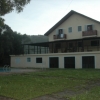
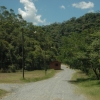
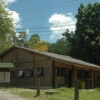
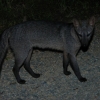
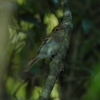

A huge area of preserved Atlantic Rain forest in Western Sao Paulo state
The administration and accommodation area are set around the upper part at circa to 900m This forms the more easily accessible region of this huge Serra do Mar scarp- slope forested mass that is preserved by the union of at least 3 state conservation areas. Numerous trails and knowledgeable resident guiding, along with a most impressive-species-list for this very bird-rich destination, guarantees a most memorable visit.
Fitness Rating M (trail-walking involved)
Minas Gerais State
Serra do Cipó M.G.
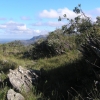

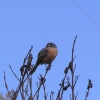
High grassland plateau with varize forest pockets
Discovery spot of that rare and sometimes elusive Cipo Canasteiro, also great for other relict plateau bird species such as Hyacynth Visor-bearer, Cinereous Warbling-finch, Blue-finch, Grey-backed Tachuri, Pale-throated Serra-Finch etc.
Fitness Grading MD-D
Caraça Monastery M.G.

Forested Hills, habitat diversity and Manned Wolves
A wonderfully situated private forest reserve set around an old and functioning monastery, great birding in the ample surrounding grounds and adjacent private-forest reserve. Includes good chances of seeing Swallow-tailed Cotinga, Dusky-tailed & Ochre-rumped Antbirds, Serra Antwren and one of the best stake-outs in the region for White-breasted Tapaculo. Slightly ritualized feeding of wild Manned Wolves by the monks takes place every evenings.
Fitness Grading M-MD
Serra da Canastra M.G.
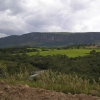



High grassland plains with crystalline rivers, Mergansers and Giant Anteaters
Home to, and one of the very “few stake-out localities” for that mega-tick, Brazilian Merganser. Chances are good for encountering this rarity along with many other local interior specialities, these include birds such as Sharp-tailed Grass-tyrant, Cock-tailed Tyrant, Helmeted Manakin and the delightful Golden-capped Parakeets and Toco Toucans. The best place in South America to see Giant Anteater in daylight.
Fitness Grading E
Ibitipoca M.G.
High quartzite plateau
A high-level quartzite mountainous region very rich in Orchid and other plant-life. Interesting bird species such as Stripe-tailed Yellow-finch and Blue-winged Macaw are regulars here along with other local specialities such as the endemic White bellied Warbler.
Fitness Grading MD
Caratinga M.G.


Spider-monkeys and Low-level forest birding in Eastern Minas Gerais
Wooley Spider- monkeys along with other primate species are to be found here in a large private forest reserve that also houses a good number of endemic and endangered avifauna. The main forested area follows the southern bank of the Manhuacu river valley and consists of hot low-level forest, probably the most threatened forest type in South eastern Brazil?
Fitness Grading E-M
Bandeira M.G. / B.A. boarders


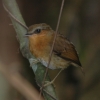

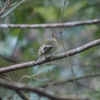
A remnant jungle ridge Forest–patch, full of brilliant rare species
A rather difficult to access forested mountain ridge. Is this the last place where Stresman’s Bristlefront can possibly be encountered? A bit of a “forced hike” up to the remnant forest but the effort should be well rewarded, if not with a Bristlefront, then almost certainly with a number of other rare endemics.
Fitness Rating MD-D (Approx 3-4kms walk each way on steep tracks).
Salta da Divisa M.G /B.A. boarders
Another remnant Jungle patch, this one at almost sea-level, harbours Slender Antbirds and other rare vine-forest/Caatinga species
Accessed from Southern Bahia and also approx 2 hrs from Porto Seguro, this privately owned forested region houses a recently discovered population of Slender Antbird and the even rarer Scalloped Antbird, along with a number of other dry woodlot/vine-forest species. Set in the Jequotinhonha river valley the surrounding region also appears to house a number of extra-limital species from the North and interior of Brazil. A good place to visit to boost ones Trip or World-list.
Fitness Rating M (approx 3-5kms walking).
Southern Bahia State
Monte Pascoal BA
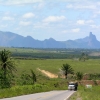

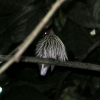
Great tropical jungle Birding alongside native Indian culture at the discovery point of Brazil
Monte Pascoal offers some excellent jungle interior birding. A good list of endemics may be encountered at this well kept National park / Indian reservation. Birds such as Black-headed Berryeater, Scaled Antbird, the recently split Eastern Striped Manakin and White-bellied Tanagers, and Black-cheacked Gnateater are all regularly encountered here. The reserve possesses an impressive list of rare raptors seen here, including Harpy Eagle, Black & White and Ornate Hawk-Eagles and the endangered/endemic White-necked Hawk. In Jan 2008 Channel-billed Toucan, Black-necked Aracari, Greyish Mourner, Blue-backed Manakin, Thrush-like wren and a large lec of Red-headed Manakin etc, were also noted.
Fitness Grading MD
Porto Seguro
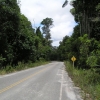

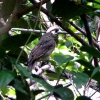

Rare Cotingas, Amazon Parrots & Hummingbirds. A veritable Meca for the worldbirder
The preserved jungle surrounding this famous coastal resort represents a Meca for low-level jungle birding in South-eastern Brazil. It is home to a number of spectacular endemics, all menaced with extinction. Birds such as the exotic Banded Cotinga and the White-winged Cotinga, Red-browed and Mealy Amazon Parrot, the shy and reclusive Black-headed Berryeater and the eastern race of Cinereous Mourner, and the ultra endangered Hook-billed Hermit are all possible in the hot jungles of this region. The birding is mixed between jungle interior trails and jungle-edge track / roadside observing - for the canopy-dwelling species.
Fitness Grading MD
Boa Nova
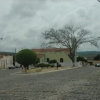
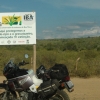

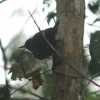
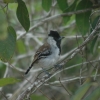
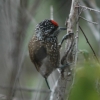
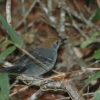

Many rare Antbirds etc. in adjacent & extremely diverse habitats
Three habitat types, Caatinga, Vine-Forest and Humid Forest all within easy reach and each with its own distinct avifaunas, these include some really “prize endemics”. Fast becoming another “meca” for Brazilian birding.
Fitness Rating E-MD
Serra Bonita



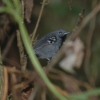

A private mountain rainforest reserve in Southern Bahia; housing a host of rare endemics
An unusual habitat for Bahia state, both humid mountain and foothills forest situated approx. 2hrs drive north of Porto Seguro. This amazing private reserve houses a most interesting group of Atlantic rainforest endemics. Above all Serra Bonita is also home to a population of that only recently described and very range-restricted furnaridae, Pink-legged Gravateiro.
Fitness Rating M
Prado

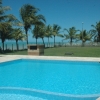
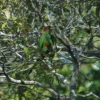
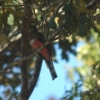
A substantial area of hot, tall forest on the coastal Bahia plains
The forest is bisected by a multitude of access trails which are proving ideal for birding. This is a newly designated reserve surrounded by further, privately owned, large forest patches. Population studies are still to be published but this reserve is import, houses a large number of the regions typical endangered coastal forest dwelling endemics, and will soon be recognised as such.
Fitness Rating E (some walking required to access most tracks)
Espirito Santo State
Linhares Reserve CVRD E.S.
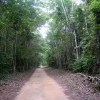
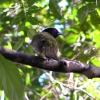
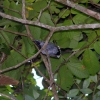
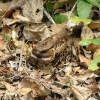
low-level seasonally dry hot Jungle
A privately owned, hot lowlands jungle reserve FULL of interesting endemics (many of them of globally threatened status) and some other extra-limital South-Eastern Brazil species. This reserve boasts it’s own 5 star accommodation as well as also offering some superb night-birding possibilities, all done from, or within a few metres amble from our vehicle.
Fitness Rating E-MD. Dependent on tracks selected.
Pedra Azul E.S.
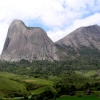

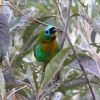

circa 900metres Humid Forest Birding in Cherry-throated Tanager country
Excellent all round birding from fairly level jungle tracks. Singing Pihas, Bell birds and Berry-eaters along with that chance of maybe seeing a rare Cherry-throated Tanager (one of the worlds most critically endangered birds) which has been recorded from these forests.
Fitness Grading MD
Santa Teresa; Mata Atlantica
circa 600metres mountainous-jungle birding in Espirito Santo State
Conveniently placed for a stop-over en-route to Southern Bahia or the Linhares districts, Santa Teresa offers a chance to encounter some of those intermediate level serra do mar jungle species of the 500-800 metre zone. The town is famous for the fantastic variety of local Hummingbirds and include that spectacular endemic, the Frilled Coquette.
Fitness Grading E-MD
Key to fitness grading:
E = Easy; most watching within view of the car/transport.
MD = Moderately Difficult; walks of approx 30-mins to 1 hour away from the vehicle.
D = Difficult; Involves jungle hikes that may keep us out from half a day to the whole of the day. Some sections can be steep and may involve negotiating fallen logs etc.
Key to South Eastern Brazil Regions:
M.G. = Minas Gerais State, starts about 200kms. North of Rio city, a very large and extensive interior Brazilian state famous for it’s grassland and rocky plateau endemics.
R.J. = Rio de Janeiro state, approx the size of England, Rio city being almost central on the southern coastline.
S.P. = Sao Paulo state, starts about 300kms to the west of Rio de Janeiro state and forms a boarder with Itatiaia national park.
E.S. = Espirito Santo State, starts about 400 kms along the coast, north-east from Rio city, a continuation of the restinga sandbar beaches and serra do mar coastal mountain range. Becoming more tropical and less seasonal in climate as we travel north.